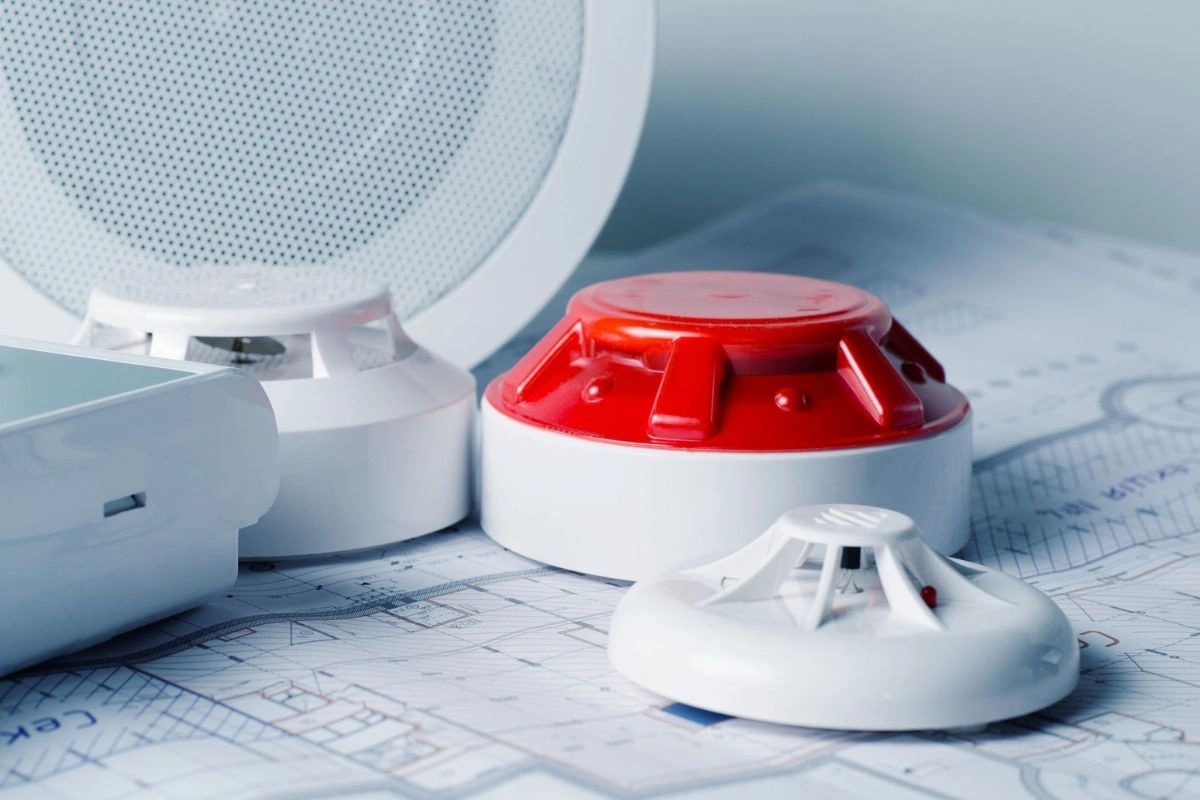Smoke alarms are essential for ensuring the safety of building inhabitants, as anyone who has ever taken part in a home or business fire will attest. Approximately three out of five fire deaths occur in houses without smoke alarms or with malfunctioning alarms, according to the National Fire Protection Association (NFPA). A recent investigation found that the fatality rate in homes without functional smoke alarms was more than twice as high as the death rate in homes with operational smoke alarms. Even though most individuals concur that smoke detectors are crucial life-saving equipment, numerous individuals disregard the fundamental instructions for installing and maintaining smoke alarms, and the same is the case for intruder alarm installation. To help you save your life, we have compiled an assortment of the Top 7 Essential Smoke Alarm Tips. Even though a lot of these suggestions appear straightforward and effortless to implement, many of us overlook them.
1. Put in Place Fire Protection
The finest early warning system for a fire is a smoke alarm. Place smoke detectors outside every sleeping room and on each floor of your house, which includes the basement. Place one inside your bedroom space as well, if you keep the door closed. Replace batteries once a year or whenever an alarm “chirps” to indicate low battery power, and inspect alarms monthly. A disabled smoke alarm can’t safeguard your life, so never “borrow” the battery for another purpose. All alarms older than ten years should be replaced. Consider adding a smart fire sprinkler system for total home security.
2. Prepare to Flee a Fire
You must leave your house quickly if there is a fire. Get your family together, as well as prepare an escape strategy beforehand. Make sure everyone is aware that each room has at least two clear exits, particularly windows. (Use the stairs rather than the lift to escape a fire if you reside in an apartment block.) Choose an outside location for the meeting. At least twice a year, have everyone in the house practise your escape plan.
3. Watch out for Smoking
The most common cause of fire mortality in North America is negligent smoking. It can be deadly to smoke in bed or while you’re sleepy. Give smokers big, deep, non-tip ashtrays, and before throwing away butts, soak them in water. Look for smouldering cigarettes underneath cushions and throughout upholstered furniture before you go to bed or leave the house after somebody has been smoking.
4. Keep in Mind that Lighters and Matches are Instruments Meant Solely for Adults!
Only use child-resistant lighters, and ensure that all matches and lighters out of children’s access and sight, ideally in a locked cabinet. Teach kids that lighters and matches are reserved for adults. Older kids ought to provide matches and lighters to an adult right away, while younger children ought to be taught to notify an adult if they find them.
5. Safety in the Kitchen
Always be at the point of view of any cooking to monitor it. Also, wear short, rolled-up or tightly qualified sleeves at any time one is having a cooked meal and ensure that anything that can be easily caught by fire is out of the cooking area. Turn the handle on the pot on the stove to a way that it does not allow children to pick up the handles, but at the same time does not prevent you from finding yourself bumping around the pot. Create a three-foot (one-meter) kid-free zone in your kitchen range. Should the grease begin to burn in a pan, then you should cover it with a lid so as to extinguish the blaze. Also, you should switch off the heat. Always leave the lid on as the pan cools down.
6. Safely Heat
When not adequately maintained, heating devices such as wood stoves, fireplaces and space heaters may cause fire. Have an experienced technician advise and service your heating systems, chimney and fireplace once a year to ensure that there would not be a buildup of combustible creosote or debris.
7. Safely Storing Toxic Substances
Examples of flammable items should be kept in their original packaging in a place of good ventilation, free of sources of warmth. Cases such as paint thinners and cleaning supplies should be stored. On top of this, make sure that they do not have access to potentially dangerous boxes like stoves or water heaters, as well as that they are not reachable to children.
Final Words:
The following list of suggestions should encourage you to take a less reactive approach to the correct setup and upkeep of your home’s smoke detectors. You are protecting your family as well as your house from fire by maintaining the devices in good operating order.


